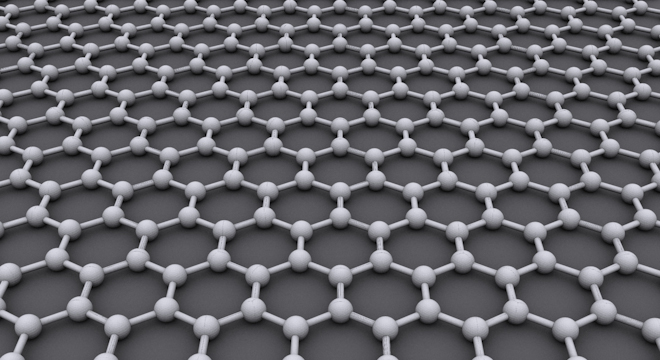By TINA CASEY
At only one atom thick, graphene is an unusual material that defies ordinary methods of examination. Now a team of researchers at Iowa State University has found a path to uncovering unique new capabilities of graphene, by subjecting it to short laser pulses down to the range of 10 quadrillionths of a second.
Graphene is already known to be an unusually efficient electrical conductor, considering its lack of heft. Headed by physicist Jigang Wang of the Department of Physics and Astronomy, the Iowa State research team discovered that graphene also has the ability to amplify light.
Wang, who also works at Ames National Laboratory, used laser spectroscopy techniques that are a far cry from the methods initially used to explore graphene. The material was first discovered in 2004 when U.K. researchers Andre Geim and Konstantin Novoselov literally used a piece of sticky tape to separate a layer of atoms from a chunk of graphite.
Because of its two-dimensional nature, graphene possesses extraordinary properties. It combines unusual strength (200 times stronger than steel, according to one estimate) with flexibility, near-transparency, and the ability to conduct electricity and heat.
Much of the current research into graphene has covered its electrical properties, as well as its ability to transmit light in a linear state in which the outgoing light signals are equivalent to the incoming ones.
According Wang, his team is the first to demonstrate that graphene can be manipulated into a highly non-linear state, enabling it to emit more light than it absorbs.
To achieve this effect, the team subjected sheets of graphene to ultrafast laser pulses of about 35 femtoseconds (35 quadrillionths of a second). The pulses prodded graphene into a “very unconventional state” called population inversion. In population inversion, more electrons populate higher-energy states. Normally, most electrons populate low-energy states.
The amplification or optical gain produced by this non-linear state was about one percent, enough to transform infrared light into visible light.
According to Wang, a gain of that order using a conventional semiconductor would require a material “hundreds of times thicker.”
Graphene’s out-of-scale performance as an optical amplifier is consistent with its electrical capabilities, leading to the potential for a new generation of small, fast, lightweight, energy efficient and durable devices, including portable electronics and photovoltaic cells as well as advanced telecommunications equipment.
As with other graphene research, the Iowa experiments are still in the early stages. Commercially available graphene optical devices are far in the future but the early results are promising, as Wang explained in a prepared statement:
It opens the possibility of using graphene as a gain medium for light amplification. It could be used in making broadband optical amplifiers or high-speed modulators for telecommunications. It even provides implications for development of graphene-based lasers.






